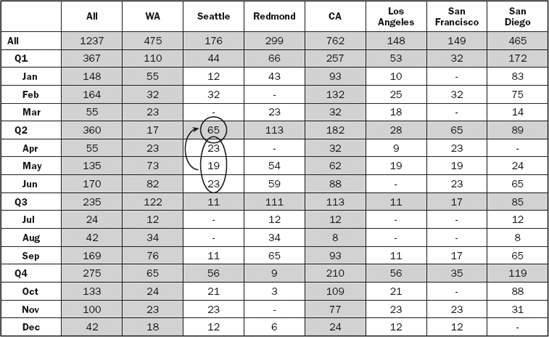15.1. The Calculation Model
Before we start looking at the overall Analysis Services query execution architecture, let's recap what you learned about the calculation model of Analysis Services in previous chapters of this book. When using the MOLAP storage mode, the data that comprises the cube is retrieved from a relational database and stored in SSAS's proprietary format. The data will be aggregated by the SSAS engine based on the MDX query. SSAS provides a way to pre-calculate aggregated data. This helps speed the retrieval of query results for MDX queries that can be satisfied with these pre-calculated aggregations. Most of the calculations that apply specific business logic in the UDM are written in MDX scripts, objects within your Analysis Services 2008 database that provide a procedural way to define calculations. SSAS features such as unary operators and custom rollups also help in defining MDX calculations needed within your UDM. The cube editor in Business Intelligence Development Studio provides a way to debug the calculations defined in your MDX scripts. However, there is complex calculation logic within the SSAS engine that defines how the calculations are applied to a specific cell. Each cell within the cube is either a value from your relational database or a calculation, as illustrated in Figure 15-1.
Figure 15.1. Figure 15-1

Figure 15-1 shows cells with sales ...
Get Professional Microsoft® SQL Server® Analysis Services 2008 with MDX now with the O’Reilly learning platform.
O’Reilly members experience books, live events, courses curated by job role, and more from O’Reilly and nearly 200 top publishers.

